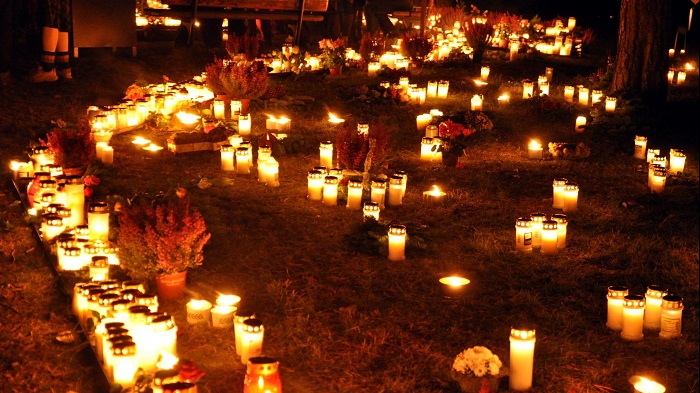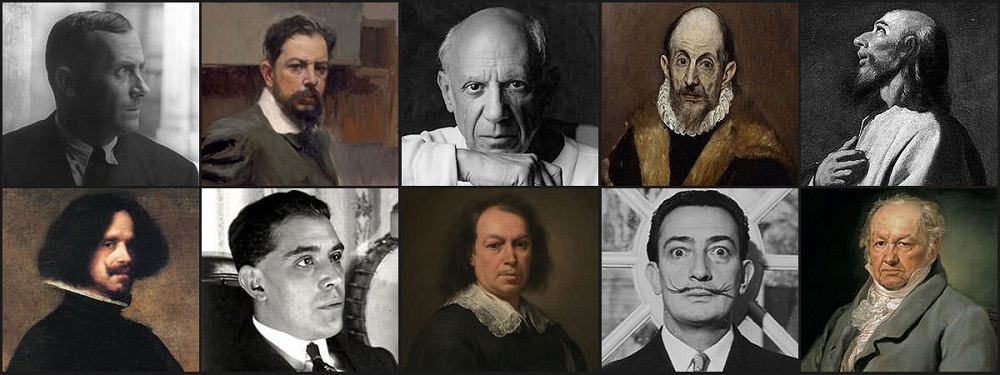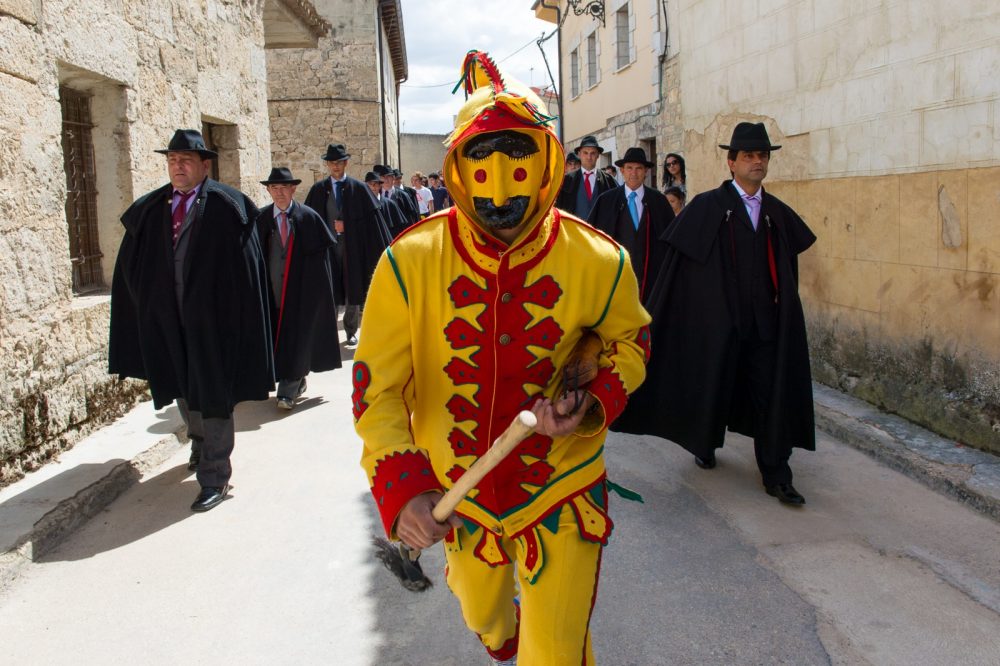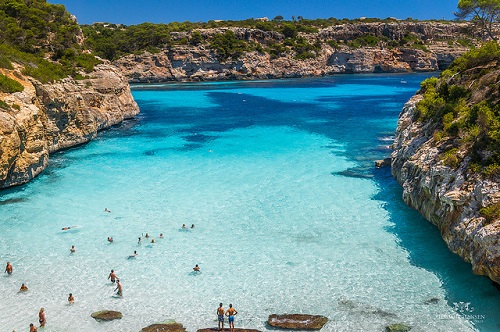All Saints Day or Todos Los Santos takes place in Cádiz province of Andalucía on the 1st November as It is a very important national public holiday in Spain. Also, All Saints Day is the day of all the Christian saints and especially those who do not have special feast days of their own. In this ceremony people from all over the country return to their town to offer flowers on the graves of deceased relatives.
History

Back in the 10th century, All Saints Day was celebrated on May 13th but Popes Gregory III and IV moved it to its 1st November because they wanted to counteract the pagan festival, the antecedent of Halloween that was organized at that time of the year. In addition, the ancient Gaels believed that this time of the year, sometimes thought of as the Celtic New Year, was when the borders between the living and the dead vanished, so the Church linked this with All Saints’ Day. At first, the time was a period of fasting as well as the holding of vigils.
The traditions of All Saints Day
 Via – Shewenttospain
Via – Shewenttospain
So the tradition is mainly that all people visit the graves of their relatives on All Saints Day to lay flowers and take them to decorate their loved ones’ graves. Also, the Churches hold special masses in memory of all the people died and the cemeteries are filled with beautiful colorful flowers.
Furthermore, Todos Los Santos is a very remarkable celebration by its large number of delicious dishes which are associated with this notable day and the best time to eat special treats like Panellets (a Catalan pastry), Huesos De Santo (saint’s bones) and Buñuelos De Viento:
Panellets:
 Via – Hogarmania
Via – Hogarmania
These are classic treats in Catalonia and a traditional dessert of the All Saints Day. Also, Panellets are made of almonds, potatoes, sugar and the most popular are the Panellets covered with pine nuts,
Huesos De Santo (saints bones)
 Via – Eatworldfoods
Via – Eatworldfoods
Saint’s bones are delicious treats made of marzipan rolled into finger-sized tubes. The name comes from the final coloring it obtains after being cooked and enveloped in syrup a bone-like beige hue.
Buñuelos de Viento
 Via – Hola
Via – Hola
Eating Buñuelos is a popular custom on All Saints Day in Spain because it dates at least back to the 1600s because King Phillip II’s cook made some references to it. The Legend has that when you eat a Buñuelos, a soul is released from purgatory.
These dough fritters are very delicious it filled with custard, chocolate, cream, or whatever your heart desires.
The next day after all Saints Day is called Souls day and usually, there is some food to eat in the morning, which is called Pan de Mej which are light bread immersed into milk or fresh cream. Usually, the bread is prepared with the mixture of corn flour and common wheat flour, Brown sugar, butter and eggs are added to the assortment to make a soft dough. Small balls are then cut from the dough and made flattened on both sides using the palm. These bread are then baked inside the oven until they change the color.
Discovering Cádiz :
Moreover, while you are visiting Cádiz to celebrate the All Saints Day tries to discover the most attractive places in this charming city like:
The Plaza de San Juan de Dios :
 Via – Wikimedia
Via – Wikimedia
The Plaza de San Juan de Dios built in the 16th century was for a long time the heart of the city, because of its proximity to the port. The square decorated with water jet and fountains, surrounded by cafes and restaurants is very pleasant for walkers. Besides, in this square, you can visit 2 beautiful buildings the first is the town hall and the second is the church of San Juan De Dios.
Cadiz Cathedral:
 Via – Afar
Via – Afar
Cádiz cathedral is the most popular monument can be seen from everywhere while walking in the city. The Cathedral, situated in the historic center, was nicknamed “Cathedral Nueva” by the locals, in opposition to the “Cathedral Vieja“ is also known as the Santa Maria Church.
The Cádiz cathedral started in 1722 but the construction was completed only a century later and thus mixes several architectural styles such as Baroque and Neoclassical.
The Tavira Tower:
 Via – Fineartamerica
Via – Fineartamerica
The Tavira Tower is one of the typical towers in Cádiz. In addition, it’s one of the most visited buildings after the Cathedral. It’s generally served as watchtowers for the port and Tavira Tower was the highest and main one. Besides, the main attraction of the tower is the Camera Obscura, a room equipped with a set of optical lenses and mirrors it allows you to discover the entire bay of Cádiz in a magnificent panorama. Also, there are exhibition halls and audiovisual projections.
Santa Catalina Castle:
 Via – Dipucadiz
Via – Dipucadiz
The castle Located at the other end of La Caleta beach, this stronghold was part of the city defense infrastructure after the plunder of Cadiz by Anglo-Dutch troops, The King of Spain decided to build the castle to strengthen one of the most vulnerable points of the city. Besides, Santa Catalina Castle holds several arts and painting exhibitions and is considered a magnificent viewpoint.
The Cadiz Museum:
 Via – Turismo.cadiz
Via – Turismo.cadiz
This impressive museum gives you a crash course in the city’s history, art and folk traditions, each category sets on a different floor of the museum. On this museum there are 3 floors, for 3 different periods:
- On the ground floor, you will find the Roman archaeological and the Phoenician remains.
- On the first floor, Spanish painters from the 16th to the 20th century are honored like by Peter Paul Rubens, Francisco de Zurbarán and Murillo.
- On the second floor, you can discover Cadiz folk customs, including the popular puppets of Tia Norica and some more modern works.
To conclude, the celebration of all saint’s day is an occasion to remind people of the importance of religion, of families and friends gathering in the cemeteries offering bouquets of fresh flowers to visit their deceased loved ones and keep their memory alive.


 Top 10 Most Famous Spanish Artists and their Arts
Top 10 Most Famous Spanish Artists and their Arts
 El Colacho, the Baby Jumping Festival in Murcia Spain
El Colacho, the Baby Jumping Festival in Murcia Spain
 Discover The Most Beautiful Places In Mallorca, Spain
Discover The Most Beautiful Places In Mallorca, Spain